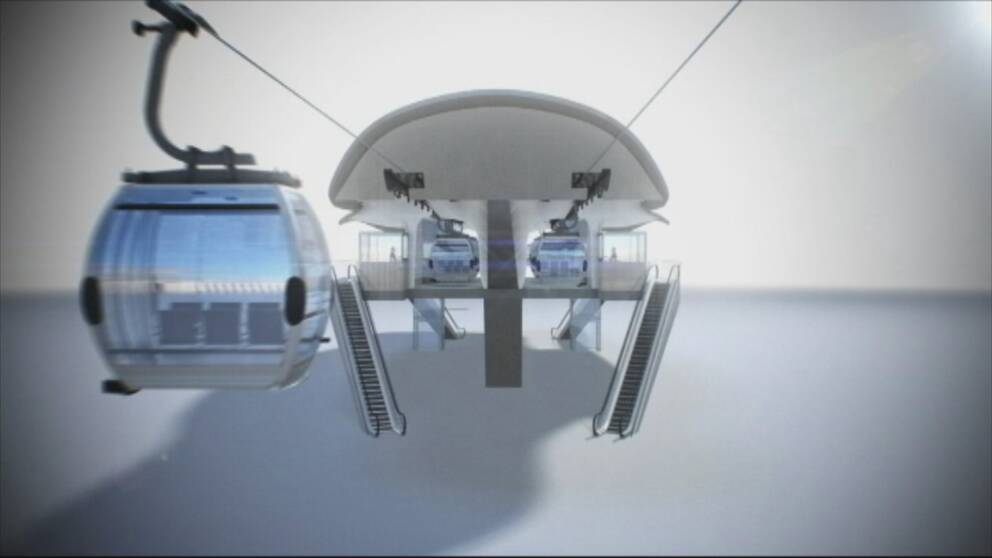The proposal came as early as 2015 when plans were forged for how Gothenburg would celebrate its 400th anniversary: build a cable car with four stations between Järntorget and Wiselgrensplatsen. Finally, the Gothenburg citizens could more easily travel between the two city hubs.
But declining investment costs have led politicians to their ears.
First, construction would cost $ 1.1 billion. Last spring came the latest bid: the cable car would cost 4 billion to build.
- It must be at a significantly lower cost for the project to be implemented. It is difficult to make an accurate assessment, but during a halving anyway, Toni Orsulic (M) chairman of the Gothenburg Traffic Committee told SVT Väst on April 25 this year.
The critics felt that the idea should be thrown in the trash and that it cost too much to investigate the issue. Until October this year, the investigations will cost a total of SEK 138 million.
The proponents responded that we might be able to cut costs and we still need to develop public transport for the future Gothenburg, which is growing in population.
Västtrafik withdrew from the project in April, but in May, the Västra Götaland region welcomed the need to continue investigating the issue.
Report: Not useful enoughNow, the technology consulting company Sweco has made a socio-economic calculation on behalf of the City of Gothenburg. The conclusion is disappointing for the enthusiasts. It is not justifiable to build the cable car because the positive benefit effects are not large enough in relation to investment costs.
This is what the report says:
"Regardless (...), the cableway does not generate enough benefit to cover the cost of investment and thus, given the assumed cost assumptions and for the calculated effects, the cableway is not socially economically profitable."
According to the report, the most positive effect of the cable car would be the time savings for the public travelers who could use the cable car. It would also lead to reduced congestion on buses and trams.
On the minus side there are, among other things, costs for operation and maintenance.
Two scenariosIn the report, Sweco writes about two different scenarios: In the case of defensive, collective travel would increase by 1.4 per cent per year until 2040, and then give a socio-economic present value of SEK 300 million.
In the second more offensive scenario, collective travel increases by 1.9 percent per year. The current value would then be SEK 700 million.
In both cases, well below the estimated cost of approximately SEK 3.8 billion.
Moderate: We want to see other optionsHowever, the new report does not change much for the chairman of the traffic committee.
- We want to see what the cable car can look like by halving the cost of it, and weighing in what other alternatives are available. For public transport this route needs a solution. says Toni Orsulic, (M) chairman of the traffic committee.
The proposal for a cable car started as a proposal from the citizens of Gothenburg. What contact do you think you moderates have today regarding what people think about the cable car?
- I think we have good control and that we listen and there are people who think it is both good and it is bad.
How do you keep track of it?
- People hear from us, and so we read debate articles and more, says Toni Orsulic.
Toni Orsculic believes that an investment like the cable car rarely meets the socio-economic requirements corresponding to what the investment itself cost.
This is something the report also mentions: "Many measures are implemented despite the socio-economic calculation generating a negative net present value."
Later this fall, politicians will decide on the continuation of the cable car project. At the same time, an investigation is underway in which Västtrafik looks at other possible solutions for public transport.
Hear how Västtrafik reasoning when in April announced that they want to withdraw from the project.

